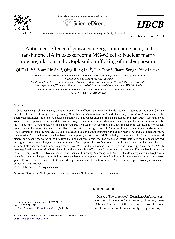摘要
Ginsenoside RgI, cinnamic acid, and tanshinone IIA are effective anticancer and antioxidant constituents of traditional Chinese herbal medicines of Ginseng (Panax ginseng), Xuanshen (Radix scrophulariae), and Danshen (Salvia mitiorrhiza), respectively. There was insufficient study on molecular mechanisms of anticancer effects of those constituents and their targets were unknown. We chose nucleophosmin as a candidate molecular target because it is frequently mutated and upregulated in various cancer cells. Nucleophosmin is a major nucleolus phosphoprotein that involves in rRNA synthesis, maintaining genomic stability, and normal cell division and its haploinsufficiency makes cell more susceptible to oncogenic assault. Ginsenoside RgI, cinnarnic acid, and tanshinone IIA treatment of osteosarcoma MG-63 cells decreased nucleophosmin expression in nuclear matrix and induced nucleophosmin translocation from nucleolus to nucleoplasm and cytoplasm, a process of dedifferentiating transformed cells. Using immunogold electro-microscopy, we found at the first time that nucleophosmin was localized on nuclear matrix intermediate filaments that had undergone restorational changes after the treatments. Nucleophosmin also functions as a molecular chaperone that might interact with multiple oncogenes and tumor suppressor genes. We found that oncogenes c-myc, c-fos and tumor suppressor genes, P53, Rb were regulated by ginsenoside Rg I, cinnamic acid, and tanshinone IIA as well. In present study, we identified nucleophosmin as a molecular target of the effecfive anticancer constituents of t Ginseng, Xuanseng, and Danseng that down-regulated nucleophosmin in nuclear matrix, changed its trafficking from nucleolus to cytoplasm, and regulated several oncogenes and tumor suppressor genes. Therefore, we postulate that Ginsenoside Rgl, cinnamic acid, and tanshinone HA could serve as protective agents in cancer prevention and treatment.
- 出版日期2008
- 单位厦门大学
